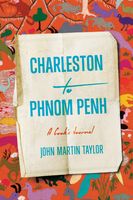Advertisement
Mostarda
Published 2022
Mostarda is an odd Italian word for a condiment that can be jam-like, chutney-like, or relish-like. It can mean “mustard,” but only in the sense of a prepared condiment. Senape is the Italian word for the mustard plant and/or seed, though it can refer to several different members of the Brassica (mustard) plant family. “Mostarda” is based on the Latin musto, or must. Many mostarde do contain the fiery oil from mustard seeds. They are rarely made by home cooks in Italy today, no more so than chutneys are made at home in America. In the best-known version, from Cremona, tiny whole fruits or fruit pieces are candied in a sugar syrup until they are clear. They are traditionally served with bollito, a classic meal of boiled meats. Of the traditional southern condiments that I make, the one that most closely physically resembles mostarda di Cremona is watermelon rind preserves; taste-wise, it resembles my chutneys. Like my chutneys, mostarda recipes might contain any of a number of peeled and pitted fruits such as apricots, figs, cherries, melons, peaches, apples, plums, and quince. Old recipes call for making a must of unripe grapes (hence the word), which few people make today.

